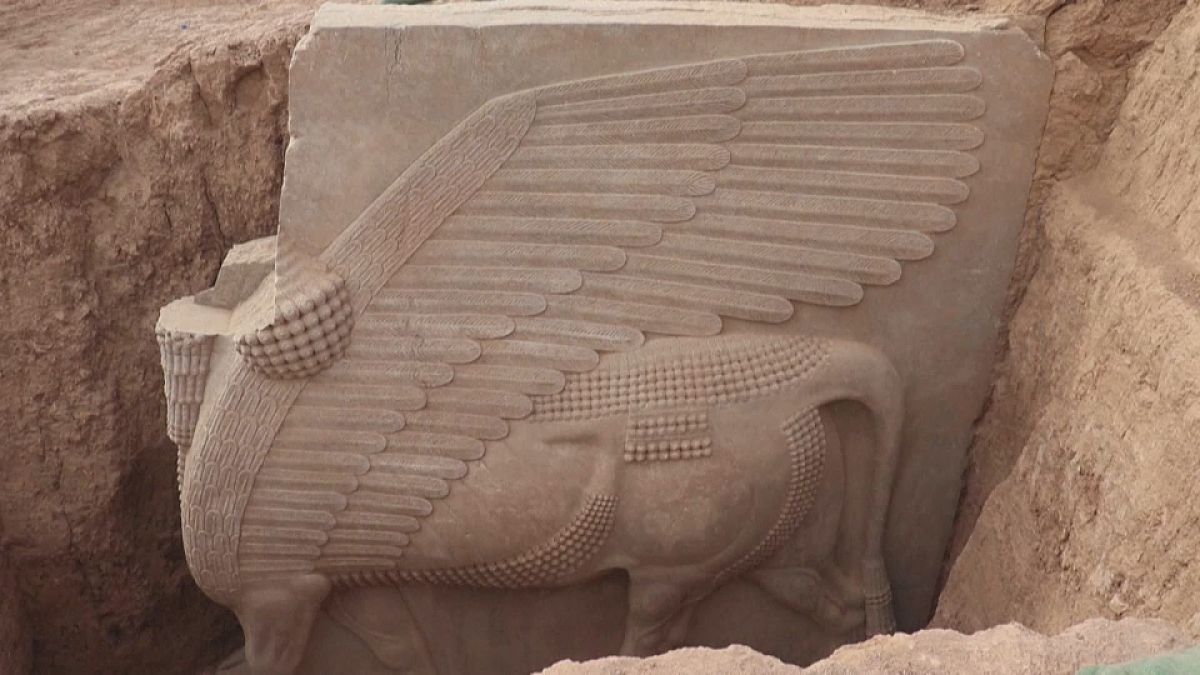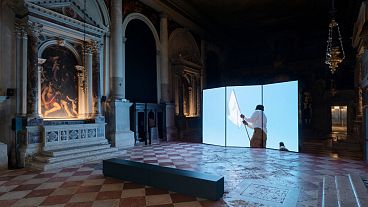Many of the priceless reliefs showing gods, mythical beasts and kings were destroyed by Islamic State group militants with explosives and reduced to rubble.
What has a curly beard that would make Santa Claus jealous, feathered wings and a muscular physique? No, it's not Ozzy Osbourne on tour - you are forgiven - it's the celestial being, the Lamassu.
A sculpture of this mythical creature dating back to the 8th Century BC was unearthed on Tuesday by archaeologists in northern Iraq, largely intact despite its huge dimensions.
Many of these towering winged alabaster deities were stationed at the entrances of ancient cities across the Neo-Assyrian Empire, now modern-day Iraq.
Boasting the head of a man, the body of a bull and the wings of an eagle, these monuments symbolised intelligence, strength and freedom. Female versions also existed and were called 'apsasu'.
Weighing 18 tonnes, and carved from a single piece of limestone, the head was confiscated from smugglers in the 90s.
"The head of the Lamassu was cut away and was stolen and recovered during the 90s by the customs in Baghdad. I think now the head is in the Baghdad museum. The rest of the body was found here and is in excellent shape" said Pascal Butterlin, a professor of Archeology at Paris Sorbonne University.
First mentioned in the 19th century by French archaeologist Victor Place, the relief dropped from public records until the 1990s when Iraqi authorities earmarked it for "urgent intervention".
It was originally erected at the entrance to the ancient city of Khorsabad, some 15 kilometres north of the modern city of Mosul.
It was commissioned during the reign of King Sargon II who ruled from 722 to 705 BC and erected at the city's gates to provide protection
"We can now study the whole context of this beautiful gate which might still be in very good condition" continued Butterlin.
"I never unearthed anything this big in my life before," Butterlin said of the piece measuring 3.8 by 3.9 metres "Normally, it's only in Egypt or Cambodia that you find pieces this big.
"The attention to detail is unbelievable," said the professor of Middle East archaeology at the University of Paris I Pantheon-Sorbonne.
It was during this period that looters pillaged the head and chopped it into pieces to smuggle it abroad.
The rest of the relief was spared the destruction wreaked by the Islamic State jihadist group, which overran the area in 2014. Residents of the modern village of Khorsabad reportedly hid it before fleeing to government-held territory.



